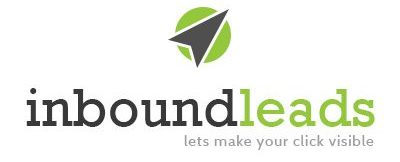
There are a number of things that make a paid advertising campaign work – the value proposition, advertising platform, ad copy, engagement strategy, budgeting/bidding, target audience etc., but the most vital factor that has the potential to make or break an advertising campaign is the keywords.
Choosing keywords that are most likely to result in clicks and conversions is both – essential and challenging. Your keywords will decide who can see your ad and who cannot. Without quality keywords in your ad copy, which are found through extensive and strategic keyword research, your advertising campaigns can easily get lost in the tons of search results.
If people are not making searches using your keywords, they are basically useless and so are your campaigns. Search volume depicts user interest, and without interest in your keywords, your prospects will not be able to discover your ads, visit your website, and turn into a paying customer.
On the other hand, if you choose keywords that are too popular, you will have to fight huge competition to get your ad on the SERP at all and you might also end up overpaying for your ad clicks. And that is why it is important to understand your target audience and determine the keywords they commonly use in their search queries, so that your ads can show up to the right people, at the right time and at the right place.
We have compiled some tips that will help refine and ease your keyword research process and build a campaign that drives traffic and sales.
DEFINE THE SEARCH INTENT FOR YOUR ADS
Before getting into the core of keyword research process, it is necessary for advertisers to understand the users’ intent to be able to create the right keywords for their ads. If you are unable to define the true intent of your prospects or if the keywords you are targeting do not correspond with your business goals, then they are only costing you money and time. For businesses aiming to generate conversions through their PPC campaigns, it is important to use phrases that imply high purchase intent. Ads focused on improving a brand’s visibility, on the other hand, should stick with eCommerce and navigation terms.
For example, the phrases “men’s watches” or “top brands men’s watches” have focus on a different intent than “buy men’s watches in Sydney” or “men’s watch stores near me.” The first two phrases would target top-of-the-funnel people that want to know about men’s watches or brands in general and might not intend to buy immediately or at all, while the latter ones show much higher commercial intent, meaning they aim to target bottom-of-the-funnel users that are looking for a store to buy a men’s watch.
Being able to truly understand your prospects’ intent is the first step in putting your keyword research and ads in the right direction.
BRAINSTORM A LIST OF POTENTIAL KEYWORDS
Even the most potential PPC ads will fail if they are unable to get in front of the right audience group – such is the importance of using robust, high-quality keywords. To start with your keyword research, build a list of broad phrases related to your business. Go broad with your collection and include all the different categories and topics that relate to your business.
Another good place to start your keyword research is landing pages that your ads will be linked to. This will give you enough raw material to come up with potential keywords that can be used in your ads. Once you have a fairly comprehensive list of keywords, you can broadly segment them into the following categories:
- Brand keywords – include terms that contain your brand or business name
- Generic keywords – include terms relating to products or services your business offers.
- Related keywords – include terms that do not directly relate to what your business or products/services, but to users who are searching for your products or services.
- Competitor keywords – include the brand names of competitors who are offering similar products and services to yours.
EXPAND AND REFINE THE LIST WITH KEYWORD RESEARCH TOOLS
Now that you have a decent list of keywords to bid on, consider using keyword research tools to narrow down your options to the ones that make most sense. There are tons of research tools out there – both free and paid – that help you zero in on the broad keyword categories at your disposal to find out specific terms that people are actually using in their search queries. Most popular of these tools are Google’s Keyword Planner, WordStream’s free Keyword Suggestion Tool.
Each keyword tool may work a bit differently, but the key stat you want to keep tabs on is search volume. This stat helps with competitors’ keyword analysis. The higher the search volume for a given keyword, the more people would be searching for that term every month. You want to pick keywords that have a high search volume and low competition. It should also be noted that the keywords with higher search volume will cost you more money to bid on. That said, you must analyse such keywords carefully before investing in them.
FINAL WORD
Keyword research is one of the most important steps in implementation of search ads, so take your time to get it right. Remember that you are not going to discover every keyword ideal for your PPC ads with the aforementioned tips on the first go, so perform your research regularly. To spend your PPC management budget and time wisely, consider hiring pay per click advertising services of an experienced agency.




